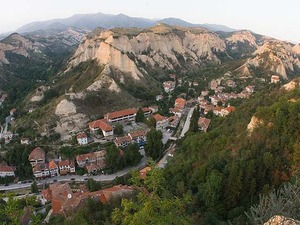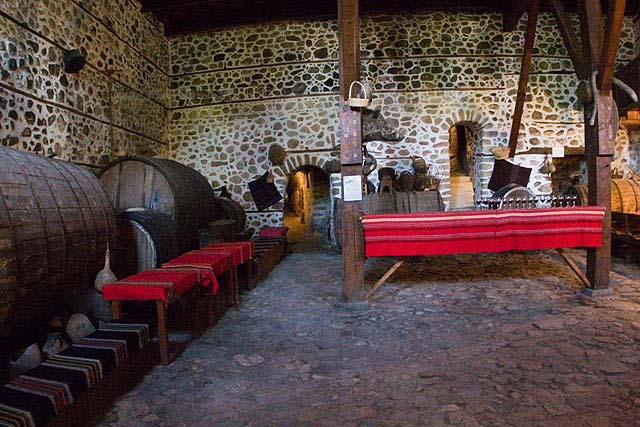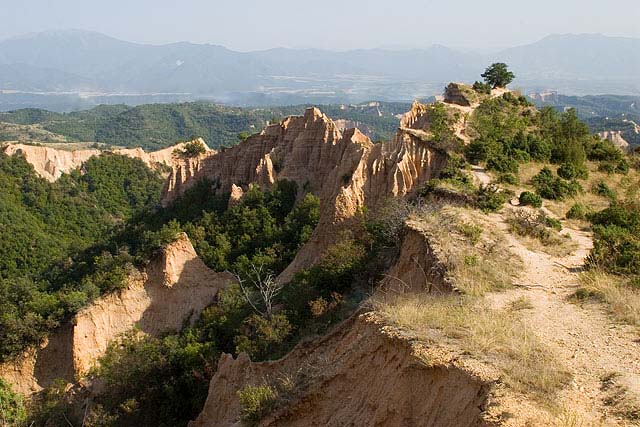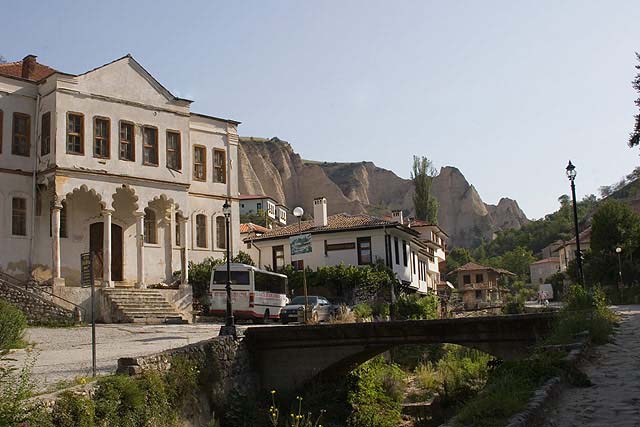MAJOR LOCATIONS IN BULGARIA
MELNIK
Melnik is situated in the southwestern foot of Pirin Mountain, 180 km away from Sofia and 23 km away from Sandanski. This is the smallest town in Bulgaria but it so attractive that the number of the visitors per day often exceeds the number of the 230 native people.Melnik is famous with its old-time houses with remarkable architecture, legendary history incredible nature, fantastic rock formations and of course with the heavy wines of fine vintage. Even Sir Winston Churchill ordered himself 500 l of the famous Melnik wine every year. The town is declared to be a cultural and historical reserve and a museum town. The climate is healing and it is good for people with pulmonary, kidneys and rheumatic diseases. Melnik hosts many international folklore festivals.
HISTORY
According to archaeological evidence, the first to settle in the area were the Thracian tribe Medi to which the famous rebel Spartacus belonged. Centuries later, the presence of the Romans left the town one of its landmarks — the Ancient Roman bridge, which is still preserved. The Slavs who later came in these parts named the settlement Melnik after the sand formations surrounding it on all sides (the Bulgarian word "mel" means "white clay, chalk"). Melnik became a part of the First Bulgarian Empire under the rule of Khan Presian I (836-852) and prospered greatly in the period. Melnik became the capital of an independent feudal principality ruled by Despot Alexius Slav, a descendant of the Asen dynasty, in 1209, and passed through an economic and cultural upsurge during his reign. The town continued to flourish under Tsar Ivan Asen II because of the duty-free trade with Venetian-ruled Dubrovnik.
The Ottoman conquest of the Balkans in the 14th-15th century resulted in a long period of decline, but Melnik was once again a thriving city in the 17th and 18th century, the time of the Bulgarian National Revival, due to the tobacco and wine production, with wine being exported abroad, mainly to England and Austria. In that time Melnik was also a centre of craftsmanship, particularly church decoration and woodcarving. Many Bulgarian schools and churches were built in Melnik in that period.
Melnik was taken by the Imperial Russian Army during the Russo-Turkish War of 1877-1878, but was given back to the Ottoman Empire according to the Treaty of Berlin. The town was the centre of a kaza in Serez sanjak of Selanik Province as Menlik until 1912. During the First Balkan War, Melnik was ultimately liberated and became once again part of Bulgaria. In the late 18th century, the town had 1300 houses, seventy churches and a population of some 20, 000 people, but a fire largely destroyed it. Since then it has been restored and rebuilt, and still, the current population of 400 is nowhere near the one from the beginning of the 20th century, when it primarily consisted of Greeks, but also of Bulgarians, Turks, Vlachs and Roma.
At the end of the Second Balkan War in 1913, the Greeks left Melnik and moved to Greece by the express orders of the Greek government; the order being given when it was known that Melnik was to remain Bulgarian. Automobiles and carts were supplied to enable the Greeks to take all their goods with them to Demir Hisar (Sidirokastro). An order was given and executed at Nevrokop, where force had to be employed to make the Greek inhabitants depart. By order of the officers, all the contents of the big Bulgarian shops in Melnik belonging to Temelko Hadzhiyanev and Konstantin Poptachev, were seized. The little Bulgarian shops and private houses were left to be pillaged by the population. On their way, the Greeks burnt the Bulgarian villages they passed through, leaving intact only remote small hamlets in the mountains. The refugees went primarily to Sidirokastro and fewer settled in Serres and Thessaloniki.
WHAT TO SEE
The town is a landmark by itself with the white old houses huddled in the unique formations known as Melnik pyramids. The most famous is “Kordopulova” house – the biggest revival house on the Balkans. There is an exposition of a real Melnik cellar with large butts where the wine matures. Visitors can taste it on spot and appreciate its high class quality. “Pashova” house hosts the town museum. The oldest preserved house in Bulgaria – “Boliarska” is situated in Melnik as well.
6 km away from the town is Rozhen Monastery and the way towards it passes through the Melnik pyramids and the view is incredibly picturesque.
Main source and photos: VisitBulgaria.net
Hot properties in Bansko - the best offers are here for you! ❄️
Buy your own property in the top ski resort in Bulgaria! An all-year-round resort suitable for winter and summer tourism with the best prices in Europe! Holidays in your own property without the need for hotel reservations!
See More
Central Park - the best-selling new development in Sofia in 2024!
Homes for sale in one of the largest new construction developments in Sofia!
A unique gated complex recreating the style and atmosphere of New York's Central Park. Modern buildings, space, greenery and breathtaking views! A future icon of the Bulgarian capital that will bring a new standard for quality of life. Choose your home now - big choice and attractive prices!
See More
A unique gated complex recreating the style and atmosphere of New York's Central Park. Modern buildings, space, greenery and breathtaking views! A future icon of the Bulgarian capital that will bring a new standard for quality of life. Choose your home now - big choice and attractive prices!
Properties with video
Only on our website you will find a variety of properties in Bulgaria with videos. Don't waste time, view them online - on your phone, laptop or tablet, at a convenient time and without the need for an inspection trip and personal visit. Welcome for video viewings with BULGARIAN PROPERTIES!
See More




